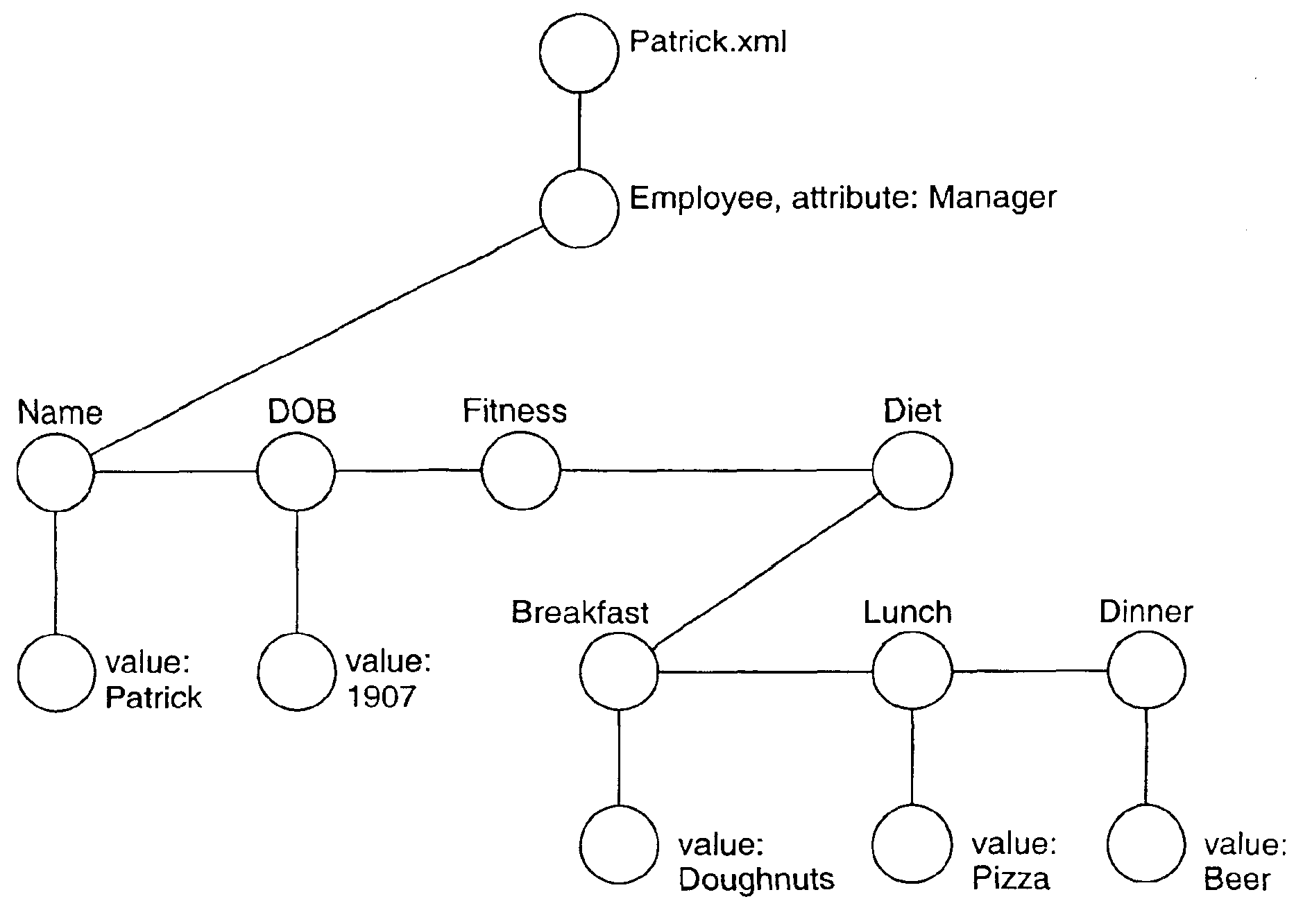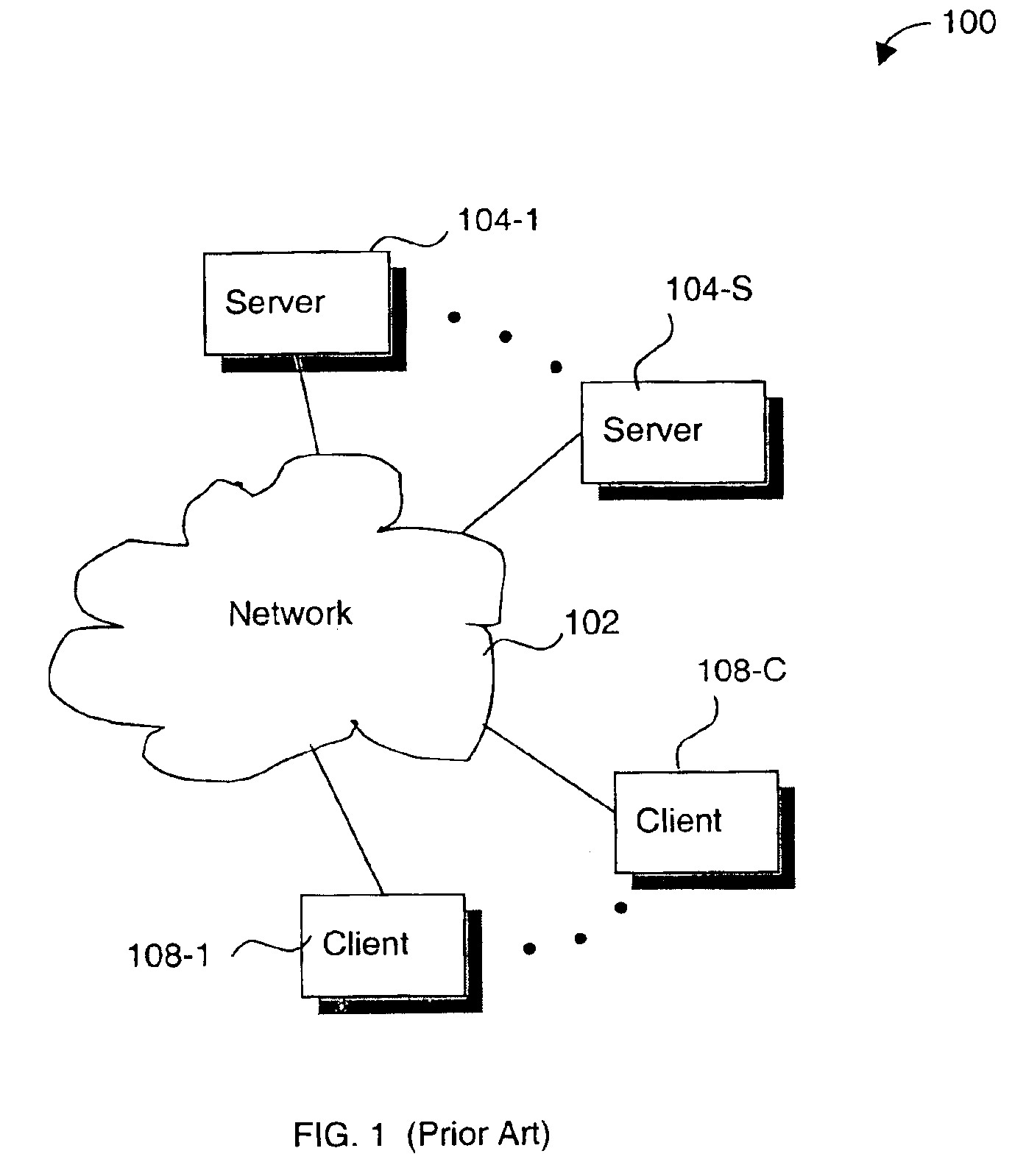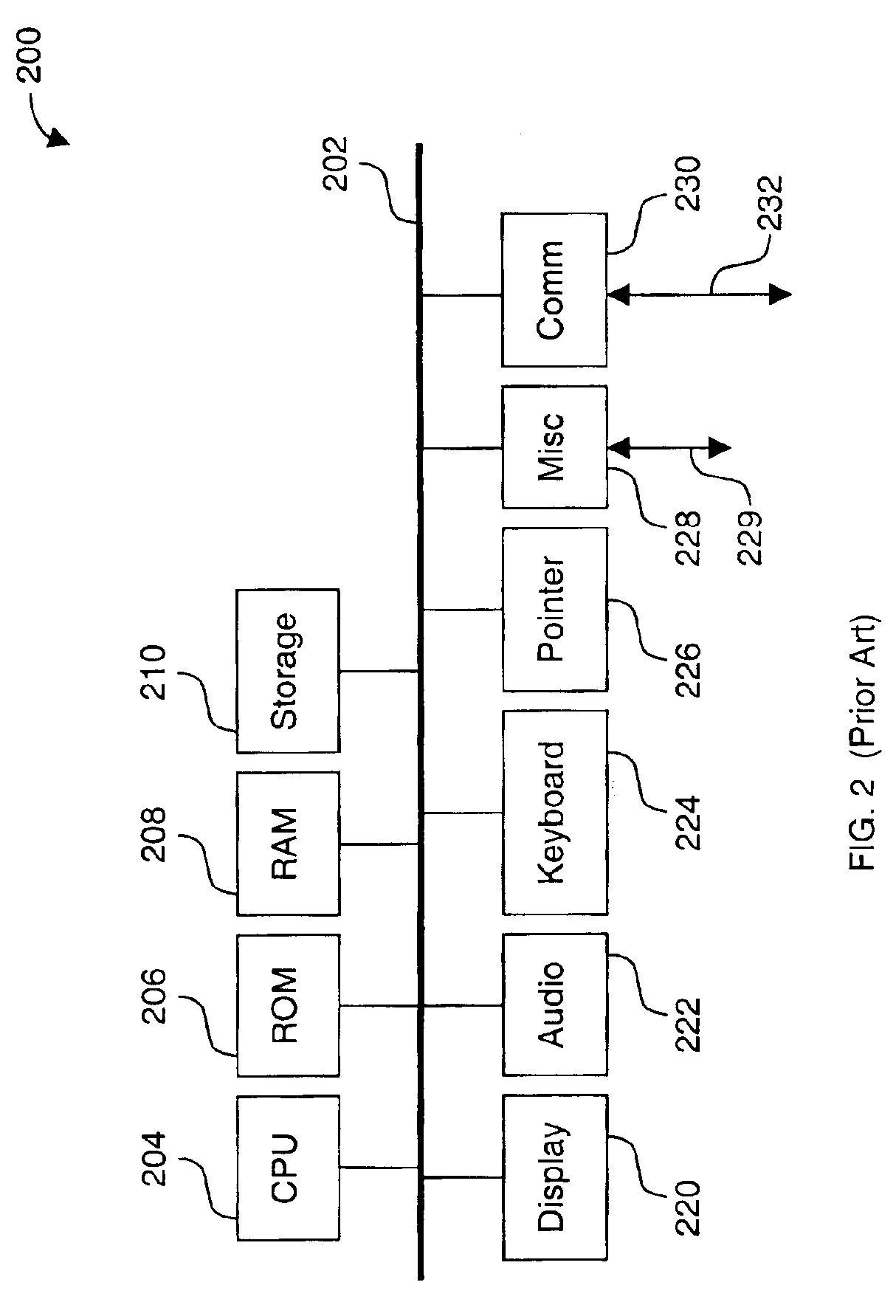Method and apparatus for database mapping of XML objects into a relational database
a database and object technology, applied in the field of database mapping, can solve the problems of difficult mapping of other database structures to the rdb model, tree structured databases are not easily and/or efficiently mapped to the traditional rdb column structure,
- Summary
- Abstract
- Description
- Claims
- Application Information
AI Technical Summary
Problems solved by technology
Method used
Image
Examples
embodiment 1700
[0082]FIG. 17 illustrates an embodiment 1700 of a logical data model using linked lists to map to tables. This example is fine grained. The linked lists approach is a generic data model for trees and graphs. Its name comes from its use of linked lists of edges to capture sibling relationships among nodes. The linked lists model supports full structured search by exposing both the structure and data values, of for example XML data. As such, the XML query language XPath / XQuery may be used on this structure. This model supports grouping by allowing XML document nodes (the root nodes of XML documents) to be children of other nodes. And it supports sharing by allowing any XML node to be reached from multiple parents (we call this XML normalization). Under key, ak denotes alternate key. As is illustrated, this example of a linked lists approach supports four objects: node, edge, class, and namespace. More information related to, for example, XML is supported in the model via such objects ...
embodiment 1800
[0083]FIG. 1B illustrates an embodiment 1800 of a logical data model using arrays of objects. This example is fine grained. The array of objects model is capable of taking advantage of some non-relational features in database systems. Specifically, this model example takes advantage of support for array-valued columns. Array-valued columns may store variable-length arrays of structured types. In this embodiment, the model uses array-valued columns instead of linked lists to maintain the attribute list and child list of each node.
embodiment 1900
[0084]FIG. 19 illustrates an embodiment 1900 of a logical data model using chunks. This example is variable-grained because the chunks may be a varying size. That is, for example, this is a data model that allows XML data to be partitioned in variable-sized chunks. Whole chunks may be shared, retrieved, or updated, while a structured search may include conditions on individual nodes. The chunk model allows a tradeoff between C performance and data granularity. However, because the chunks can be variable in size, in any implementation it may require either that the data be partitioned in advance, or there be m logic to partition and re-partition the data as needed.
[0085]Thus, various embodiments of how to map objects, such as XML, onto a database, such as a relational database, have been described.
[0086]Referring back to FIG. 1, FIG. 1 illustrates a network environment 100 in which the techniques described may be applied. The network environment 100 has a network 102 that connects S ...
PUM
 Login to View More
Login to View More Abstract
Description
Claims
Application Information
 Login to View More
Login to View More - R&D
- Intellectual Property
- Life Sciences
- Materials
- Tech Scout
- Unparalleled Data Quality
- Higher Quality Content
- 60% Fewer Hallucinations
Browse by: Latest US Patents, China's latest patents, Technical Efficacy Thesaurus, Application Domain, Technology Topic, Popular Technical Reports.
© 2025 PatSnap. All rights reserved.Legal|Privacy policy|Modern Slavery Act Transparency Statement|Sitemap|About US| Contact US: help@patsnap.com



